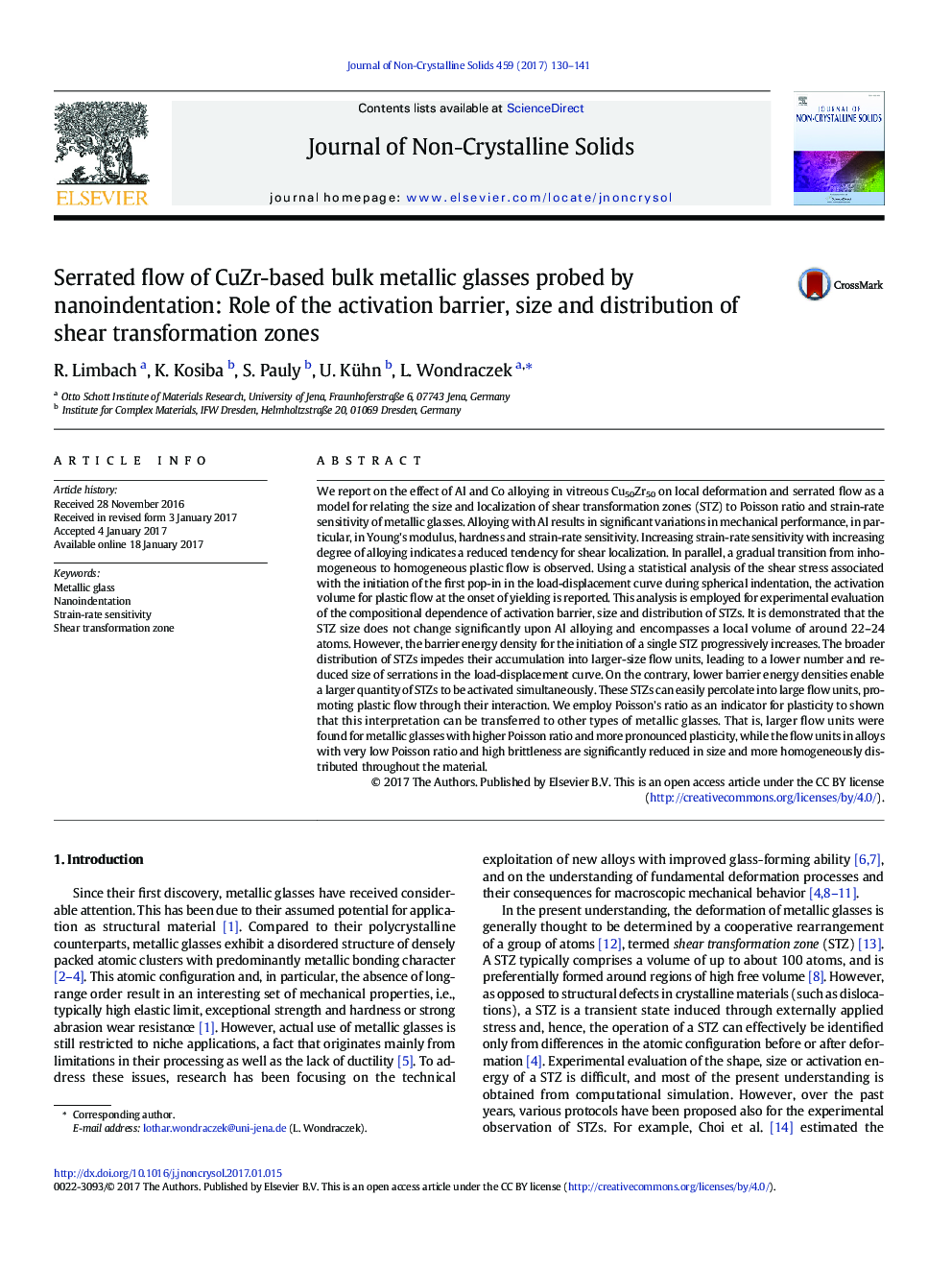| کد مقاله | کد نشریه | سال انتشار | مقاله انگلیسی | نسخه تمام متن |
|---|---|---|---|---|
| 5441443 | 1510387 | 2017 | 12 صفحه PDF | دانلود رایگان |
عنوان انگلیسی مقاله ISI
Serrated flow of CuZr-based bulk metallic glasses probed by nanoindentation: Role of the activation barrier, size and distribution of shear transformation zones
دانلود مقاله + سفارش ترجمه
دانلود مقاله ISI انگلیسی
رایگان برای ایرانیان
کلمات کلیدی
موضوعات مرتبط
مهندسی و علوم پایه
مهندسی مواد
سرامیک و کامپوزیت
پیش نمایش صفحه اول مقاله

چکیده انگلیسی
We report on the effect of Al and Co alloying in vitreous Cu50Zr50 on local deformation and serrated flow as a model for relating the size and localization of shear transformation zones (STZ) to Poisson ratio and strain-rate sensitivity of metallic glasses. Alloying with Al results in significant variations in mechanical performance, in particular, in Young's modulus, hardness and strain-rate sensitivity. Increasing strain-rate sensitivity with increasing degree of alloying indicates a reduced tendency for shear localization. In parallel, a gradual transition from inhomogeneous to homogeneous plastic flow is observed. Using a statistical analysis of the shear stress associated with the initiation of the first pop-in in the load-displacement curve during spherical indentation, the activation volume for plastic flow at the onset of yielding is reported. This analysis is employed for experimental evaluation of the compositional dependence of activation barrier, size and distribution of STZs. It is demonstrated that the STZ size does not change significantly upon Al alloying and encompasses a local volume of around 22-24 atoms. However, the barrier energy density for the initiation of a single STZ progressively increases. The broader distribution of STZs impedes their accumulation into larger-size flow units, leading to a lower number and reduced size of serrations in the load-displacement curve. On the contrary, lower barrier energy densities enable a larger quantity of STZs to be activated simultaneously. These STZs can easily percolate into large flow units, promoting plastic flow through their interaction. We employ Poisson's ratio as an indicator for plasticity to shown that this interpretation can be transferred to other types of metallic glasses. That is, larger flow units were found for metallic glasses with higher Poisson ratio and more pronounced plasticity, while the flow units in alloys with very low Poisson ratio and high brittleness are significantly reduced in size and more homogeneously distributed throughout the material.
ناشر
Database: Elsevier - ScienceDirect (ساینس دایرکت)
Journal: Journal of Non-Crystalline Solids - Volume 459, 1 March 2017, Pages 130-141
Journal: Journal of Non-Crystalline Solids - Volume 459, 1 March 2017, Pages 130-141
نویسندگان
R. Limbach, K. Kosiba, S. Pauly, U. Kühn, L. Wondraczek,